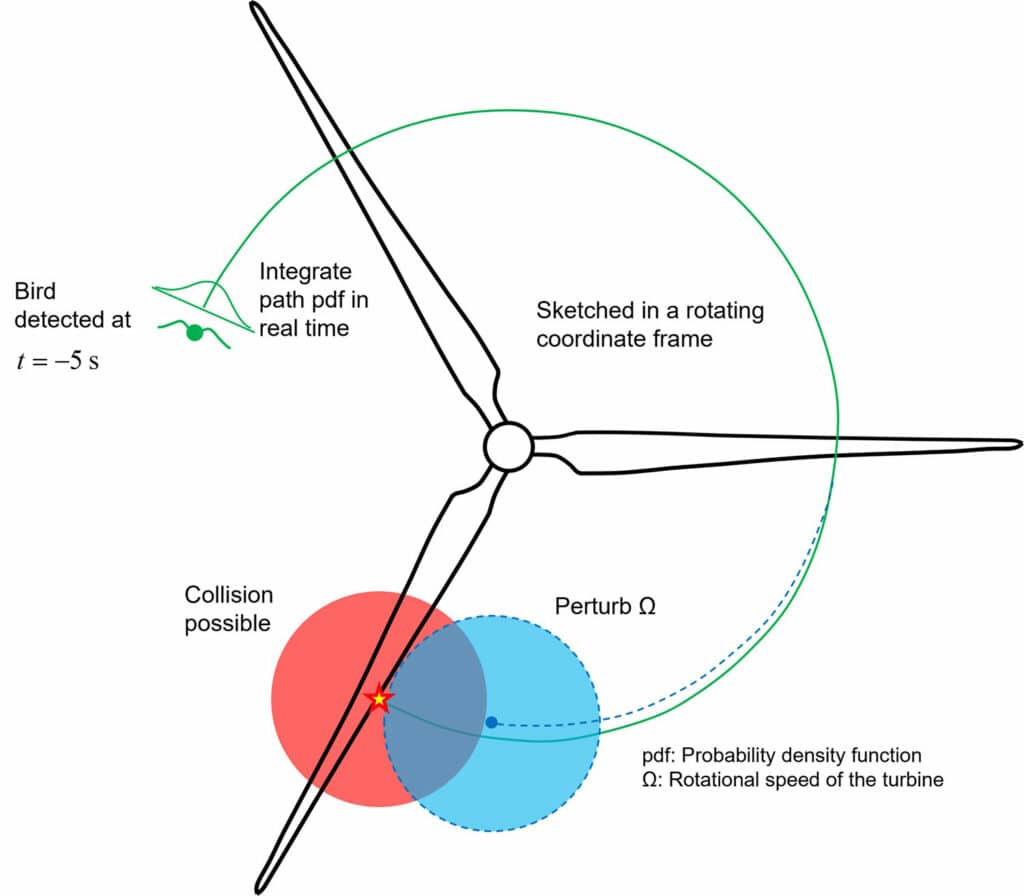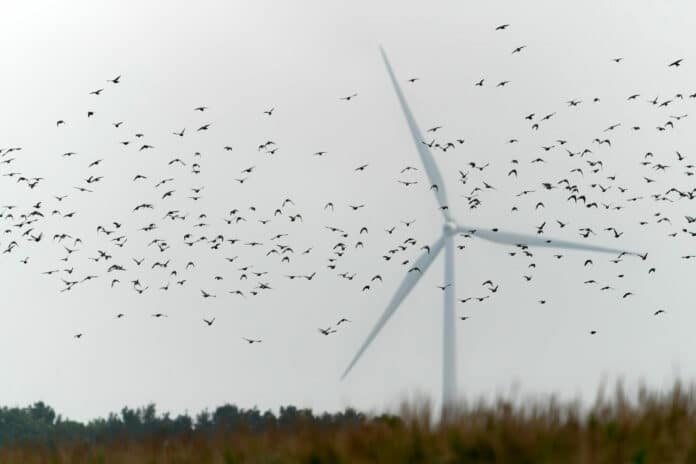With wind farm developments rapidly growing around the world, there is a growing concern about the potential negative effects of these developments on bird populations. These impacts could range from loss of habitat to increased bird mortality due to collisions with wind turbines.
Various measures have been tried in an attempt to reduce bird mortality, including the use of sound signals, lights, painting the rotor blades, and rapid shutdowns.
Norwegian researchers believe they have an idea that could dramatically cut the toll. Researchers Paula B. Garcia Rosa and John Olav Tande at SINTEF are currently working on a new concept – involving wind turbines that can adapt their blade rotation speeds to prevent bird strikes.
The concept is based on detecting birds flying directly into the path of the rotors using sensors, such as cameras and bird radar systems mounted on the turbine. This identification has to take place at least five seconds, or at a distance of at least 100 to 200 meters, before collision with the rotor blades.
Software is then used to automatically calculate the most probable trajectory of the bird. If there is a danger of collision, the system sends control signals to slow the blades down by adjusting the generator moment and blade twist.
The technology has been given the name SKARV and has already been patented. To date, the researchers have only succeeded in performing numerical simulations of their method. However, their results indicate that the SKARV system can help to reduce the number of fatal collisions by up to 80%.

Of course, it is not possible to do anything about potential collisions with the rotor head or about situations in which a bird approaches a turbine from the side or along the plane through which the blades are cutting through the air.
“It’s difficult to predict a bird’s flight trajectory, and the new system will not resolve this problem entirely,” says Garcia Rosa. “For example, if a young, inexperienced bird approaches a turbine displaying irregular flight behavior, it will not be possible to predict exactly where it will be a few seconds later. Prediction is also more difficult if several birds approach at the same time.”
In situations where a flock of birds is approaching, the researchers suggest an emergency shutdown of the turbine as an alternative solution. However, it’s important to note that a large turbine can take around 15 to 20 seconds to stop completely from a normal rotation speed. This is particularly concerning because wind turbines are often installed in groups, and the risk of collision increases when birds have to navigate through an extensive wind farm.
“The next step is to further develop existing strategies for controlling blade rotation speeds and to integrate these with methods for identifying bird flight trajectories,” says Garcia Rosa.
“Then we will be looking to implement a practical demonstration,” adds Garcia Rosa in an official release. “We believe that the SKARV technology could be commercially available within five years, and perhaps even earlier if we see sufficient interest from the industry.”
The technology can be adapted to all wind turbines that operate with variable and controllable blade rotation speeds.
